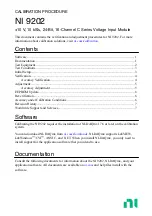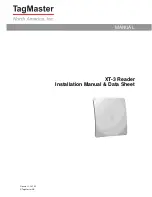
ProAct I/II
Manual 04121
40
Woodward
c.
Step load the engine with as many load steps as are practical. At each load
step, Gain A may need to be varied to maintain engine stability. Do not
change stability or actuator compensation after the first setting in step b.
Should it be necessary to change these settings to obtain good control,
repeat all previous steps until only Gain is changed at each load step. At
each load step, record the actuator output that is displayed in Menu 5. Also
record the engine load and Gain A at each point.
The table below aids in collecting the data for the Gain Plot.
Gain settings reflect the amount of slope as shown in Figure 4-4. Flat
portions of the engine plot will require relatively small amounts of gain, steep
portions of the plot will require larger gain numbers.
d.
Create a plot of the system by plotting actuator output as a function of load.
A typical result is shown in Figure 4-4.
The following table may help in the construction of the plot. Use as many load
steps as possible.
Load Step
Gain (for good
control)
Actuator Output
Load Step 1
Load Step 2
Load Step 3
Load Step 4
Load Step 5
Load Step 6
Load Step 7
Load Step 8
Load Step 9
Load Step 10
Load Step 11
Load Step 12
Load Step 13
Load Step 14
Load Step 15
Load Step 16
Load Step 17
Load Step 18
Load Step 19
Load Step 20
Summary of Contents for ProAct I
Page 10: ...ProAct I II Manual 04121 8 Woodward Figure 1 3 Example of ProAct II Actuator...
Page 11: ...Manual 04121 ProAct I II Woodward 9 Figure 1 4 Outline Drawing of ProAct I or II Actuator...
Page 12: ...ProAct I II Manual 04121 10 Woodward Figure 1 5 ProAct Wiring Diagram...
Page 13: ...Manual 04121 ProAct I II Woodward 11 Figure 1 6 Outline Drawing of ProAct Control Box...
Page 39: ...Manual 04121 ProAct I II Woodward 37 Figure 4 2 Typical Transient Response Curves...
















































